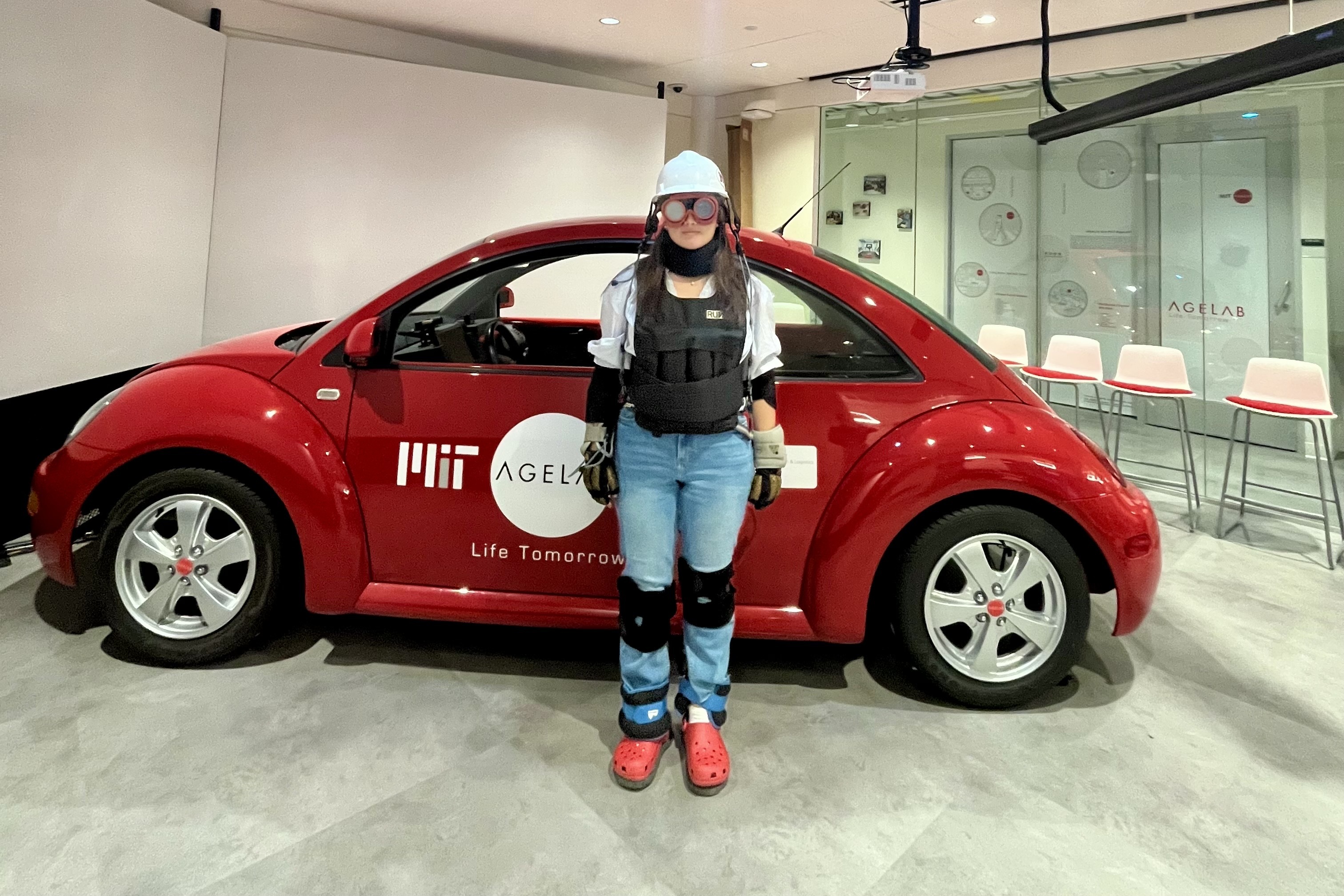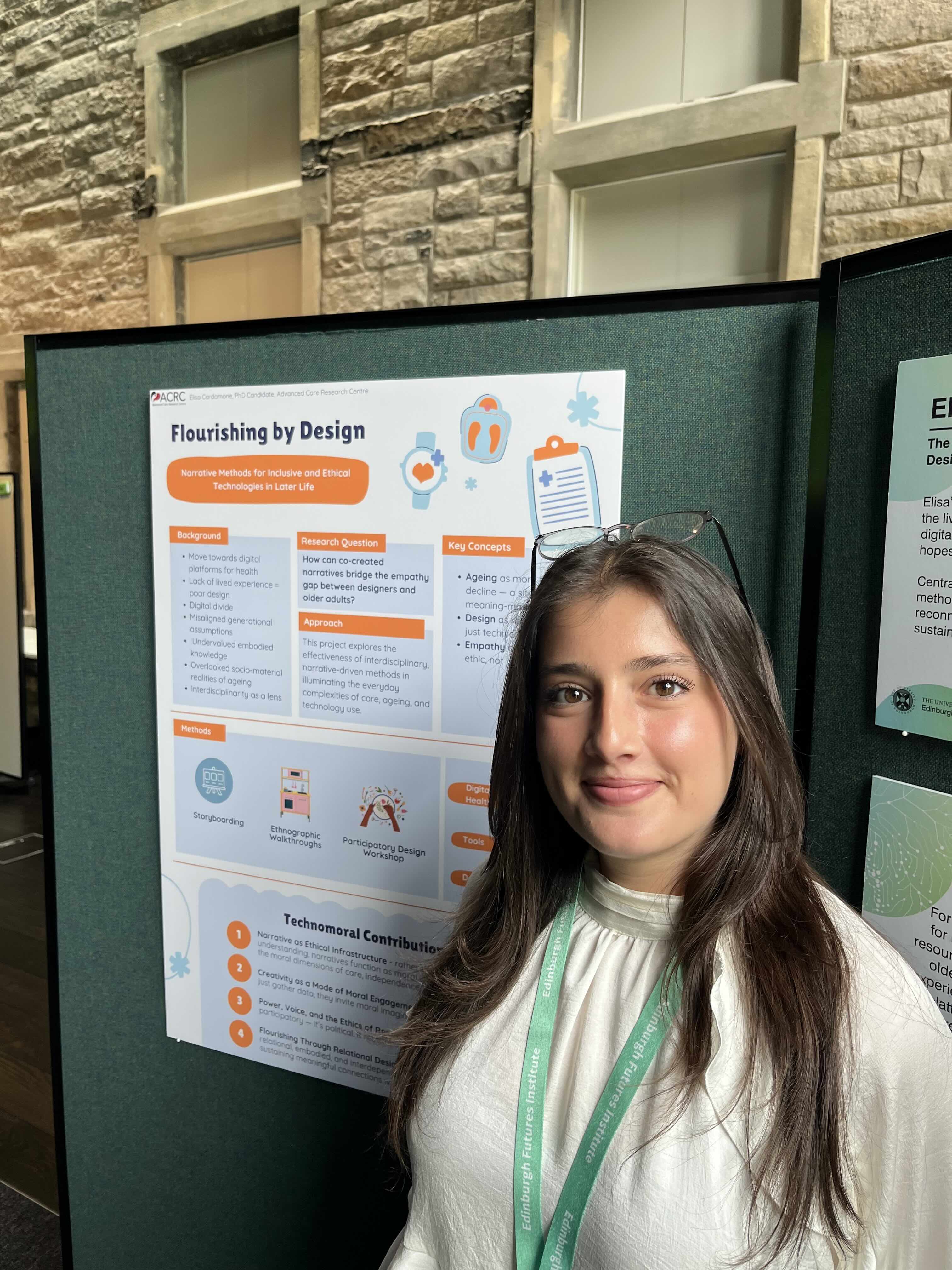Bridging design, aging, and care: reflections on my first month at the MIT AgeLab
When I arrived at the MIT AgeLab a month ago, I found myself surrounded by conversations that stretched across disciplines, generations, and futures. In one corner, researchers were discussing vehicle automation and mobility safety; in another, we were talking about how storytelling and design can illuminate the lived realities of aging. It’s exactly the kind of intellectual ecosystem that drew me here — one where technology and humanity are treated as partners, not opposites.
As a UK Fulbright Visiting Scholar and PhD candidate in Advanced Care at the University of Edinburgh, my work explores how platformization — the growing reliance on digital platforms to deliver everyday services — is reshaping how older adults care for themselves and others. Specifically, I study how home meal delivery and food planning technologies intersect with daily life, identity, and self-care in later life.
At first glance, “food delivery” might sound mundane — but in many ways, it’s a window into profound questions of autonomy, wellbeing, and connection. When we click “order,” we’re not just buying a meal; we’re engaging with a system that encodes assumptions about what people need, how they live, and who technology is designed for. My research asks: How might we design these systems differently — with empathy, ethics, and inclusivity at their core?
Co-designing Care
In Edinburgh, my research has involved exploring how people adapt, negotiate, and sometimes resist digital platforms. Here at the AgeLab, I’m extending this work to examine how we can embed empathy into design processes — developing methods that make invisible experiences visible to designers, engineers, and policymakers.
One tool I’ve been working with is AGNES (Age Gain Now Empathy System), the AgeLab’s remarkable suit that simulates age-related physical changes. Wearing AGNES transforms abstract data about ageing into lived experience — it invites designers to feel the friction, the reach, the weight. In my first month, I’ve been studying AGNES to explore how such an embodied tool can be paired with narrative and ethnographic insights, creating new bridges between emotional understanding and technical innovation.
What AgeLab Makes Possible
What stands out most to me about the AgeLab is how fluently it brings together research and real-world application. Here, social and behavioral scientists, designers, and engineers work side by side, each contributing to a shared goal: understanding how people experience aging and designing systems that make later life not only safer but more meaningful.
In my short time here, I’ve had the chance to sit in on discussions ranging from financial well-being in retirement to the future of caregiving robots. These conversations highlight the complexity of aging — not as a single problem to solve, but as a rich, multifaceted experience that demands empathy, creativity, and interdisciplinarity.
Looking Ahead
As my Fulbright project unfolds, I’m particularly interested in how narrative and co-creative methods can enrich technical research. What happens when we bring stories — not just metrics — into the lab? How might we use ethnography to design digital interventions that better reflect the values and diversity of real lives?
Over the coming months, I’ll be working with the AgeLab team to explore these questions through interdisciplinary collaborations that connect design, anthropology, and digital health. The hope is to build frameworks that don’t just ask what technologies can do for older adults, but what older adults can teach us about designing technologies that care.
One month in, I’m already inspired by how deeply the AgeLab embodies that ethos. I’m grateful to the Fulbright Commission for making this transatlantic collaboration possible — and to the brilliant team here for welcoming me into such an innovative and generous community.

